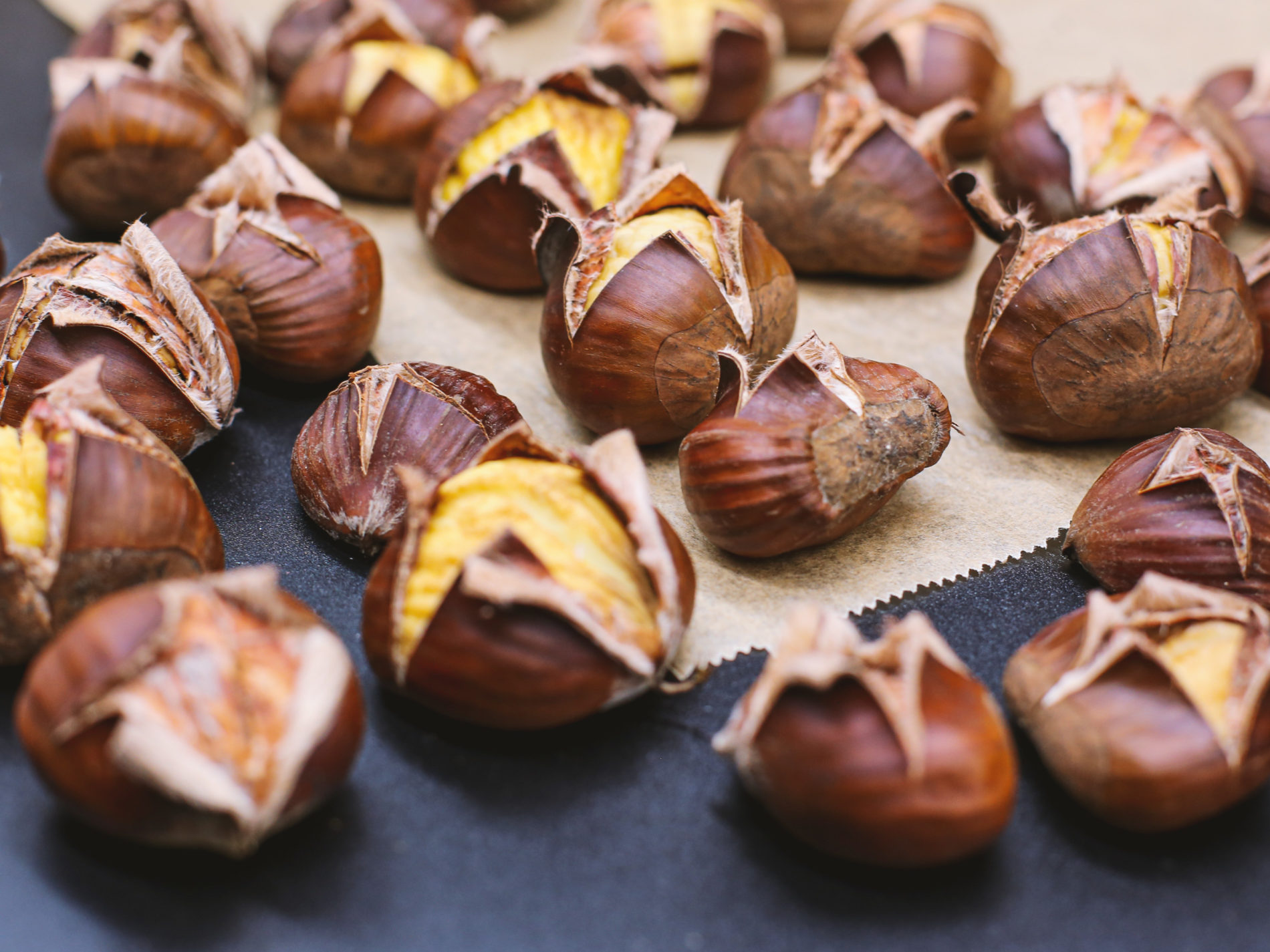The word “chestnut” is derived from the Old French chastain which in turn can be traced back to the Greek town Kastanea where the chestnut trees grew in abundance. Nowadays chestnuts are grown in many countries from China to Chile. And, of course, in Europe. When autumn comes, chestnuts are literally everywhere: markets are piled with the local produce, and the air is filled with roasted coffee-like smell from the street vendors (in the times of hardship, people would use roasted and burnt chestnuts to ground and brew ersatz coffee). The picture is so romantic that you might come by an idea of “why not roast chestnuts myself!”. Indeed, roasting something is a no-brainer, and you should definitely try it if you want. Just remember that you’ll face an obstacle of peeling their tough skins and it could take some time.
However, you might not want to have them roasted, simply because you weren’t going to eat them as a snack anyway. Say, you want to incorporate chestnuts in your weekly menu but you have no hawkers around and absolutely no urge to play with an oven. The right way to go is to buy canned chestnuts which require absolutely no prep work. And they are wonderful in taste and surely will save you a lot of time.
Especially if you are going to cook a creamy, nutty, smooth autumn soup. And the easiest way to do it is to take 2 large onions, slice them and fry them in butter until soft. Then you would want to add 2 medium chopped carrots, 500 g / 1 lb of chestnuts and 750 ml / 3 cups of vegetable stock. Simmer until carrots are soft, pour everything in a food processor and blend until perfectly smooth. Garnish with crispy bacon, chopped chestnuts and chives. Or add garlicky croutons and some sour cream. You can always omit the stock and use simple water instead. But be sure to add extra aromatics and some cream perhaps, to compensate for the possible lack of flavour. That is always the issue with chestnuts. Even when roasted, they are not very strikingly bright, rather mildly sweet. They can be even lifelessly bland in the worst case scenario. But here’s a trick to enliven your chestnuts (and any nuts for that matter) – make a batch of spiced, sweet, and salted melted butter. Take roughly 4 Tbsp of your favourite butter and melt it on medium-high heat in a skillet. Add 1 cinnamon stick, 2 cloves, a pinch of sugar, salt, black pepper, and nutmeg. Stir everything until well incorporated, transfer it to a separate bowl and use as a dipping sauce or toss your chestnuts in the melted butter and get greasy!
As for the sauces, one can make an ingenious dish from the chestnut – sweetened puree. That may sound like nothing particular but this preparation is a true revelation for folks with a sweet tooth. Let’s suppose you have 1 kg / 2 lbs of roasted chestnuts and peeled nuts. Toss them in a pan with 1 cup of sugar and 1 ¾ cups of water (you don’t need to be accurate here, just eyeball it) and bring to a boil. Then reduce the heat and simmer until chestnuts are completely soft. Stir 1 tsp of vanilla extract and blend everything in a food processor until smooth and velvety. Now it’s ready to go onto your ice creams and yoghurts, fruits and porridges. One famous application for chestnut puree is the classic French dessert called Mont Blanc: chestnut puree on top of an airy meringue with some whipped cream. It’s called that way because it resembles a little snowy mountain. And who doesn’t love the mountains!











What do you think?